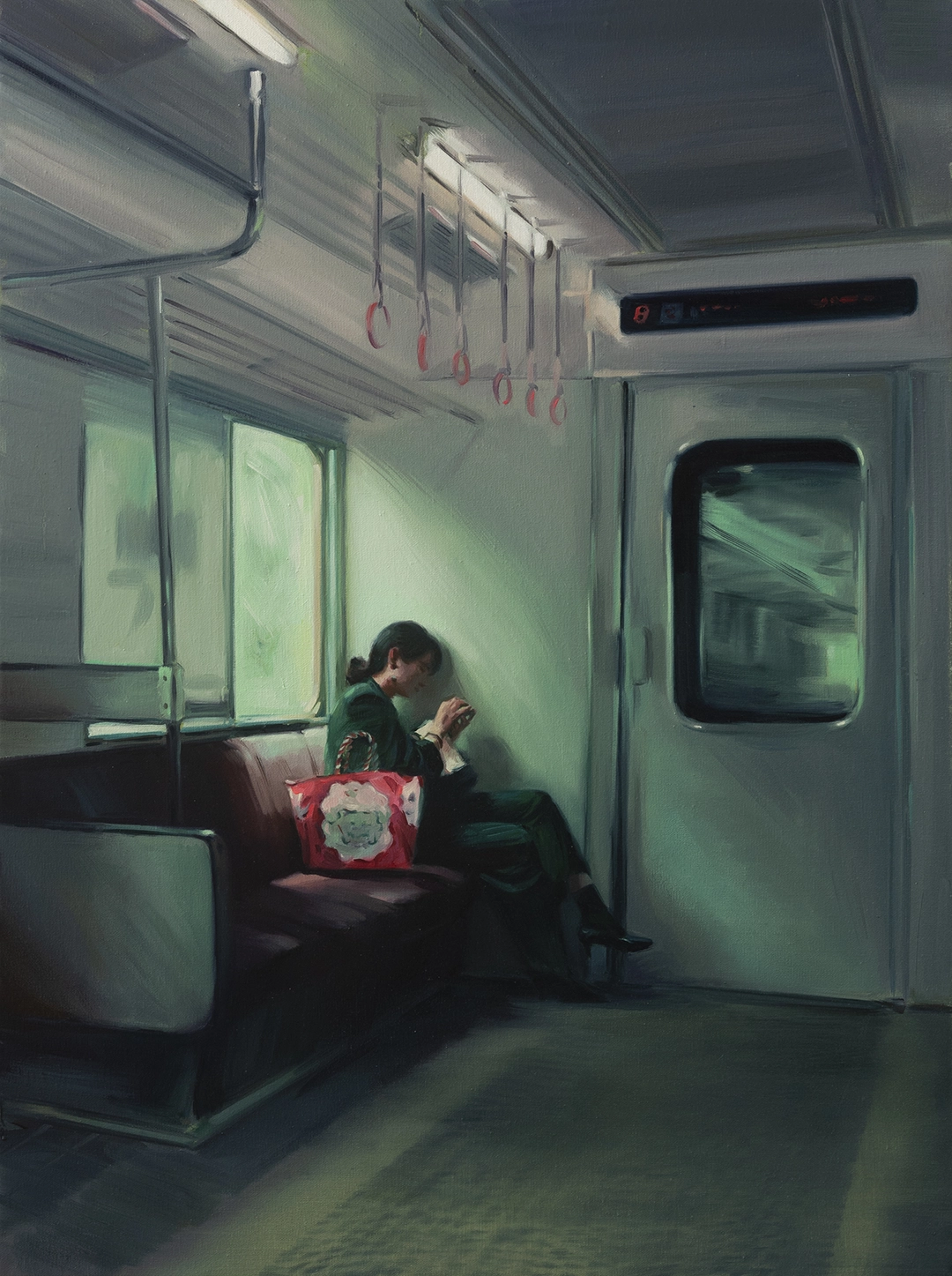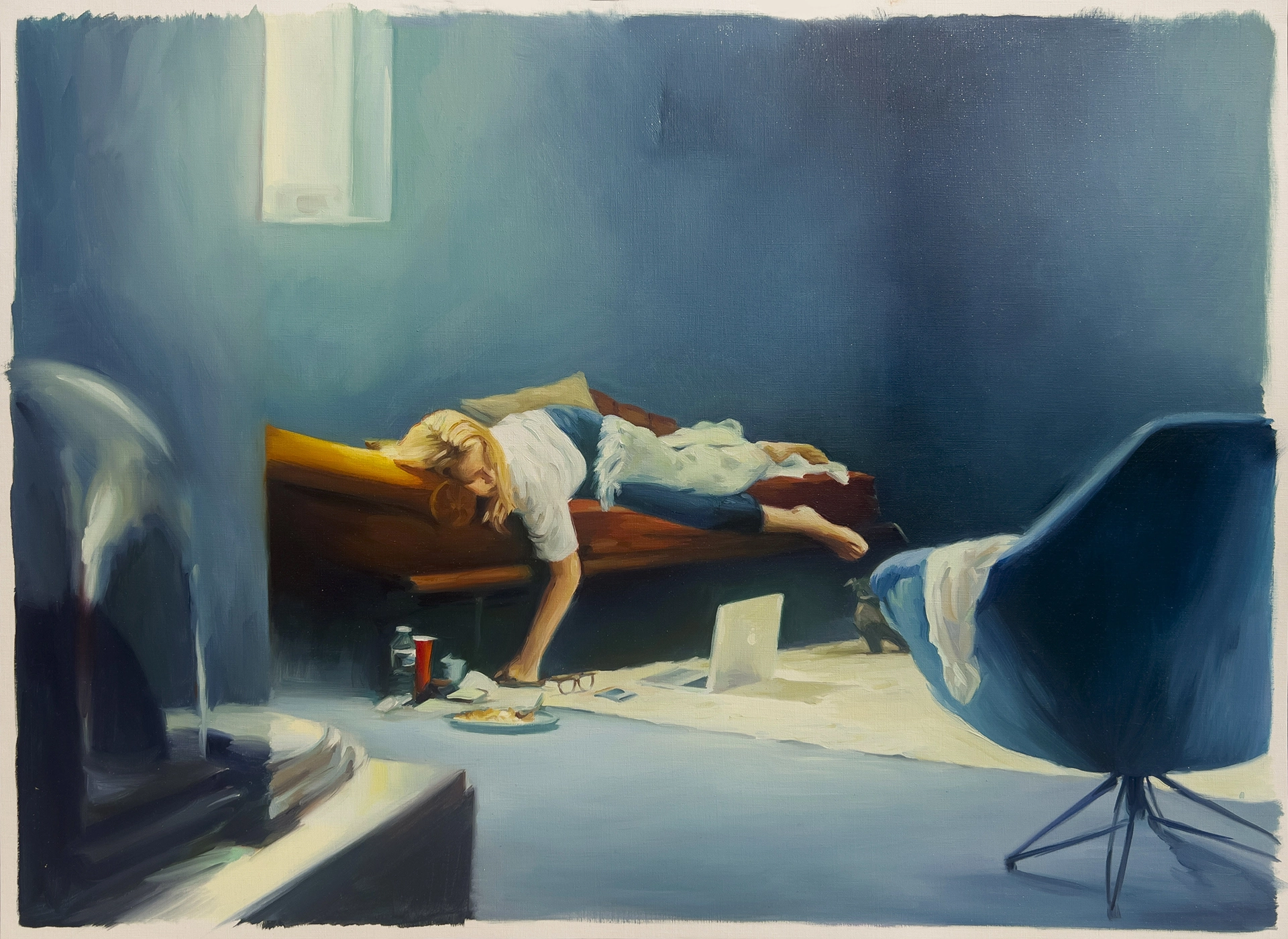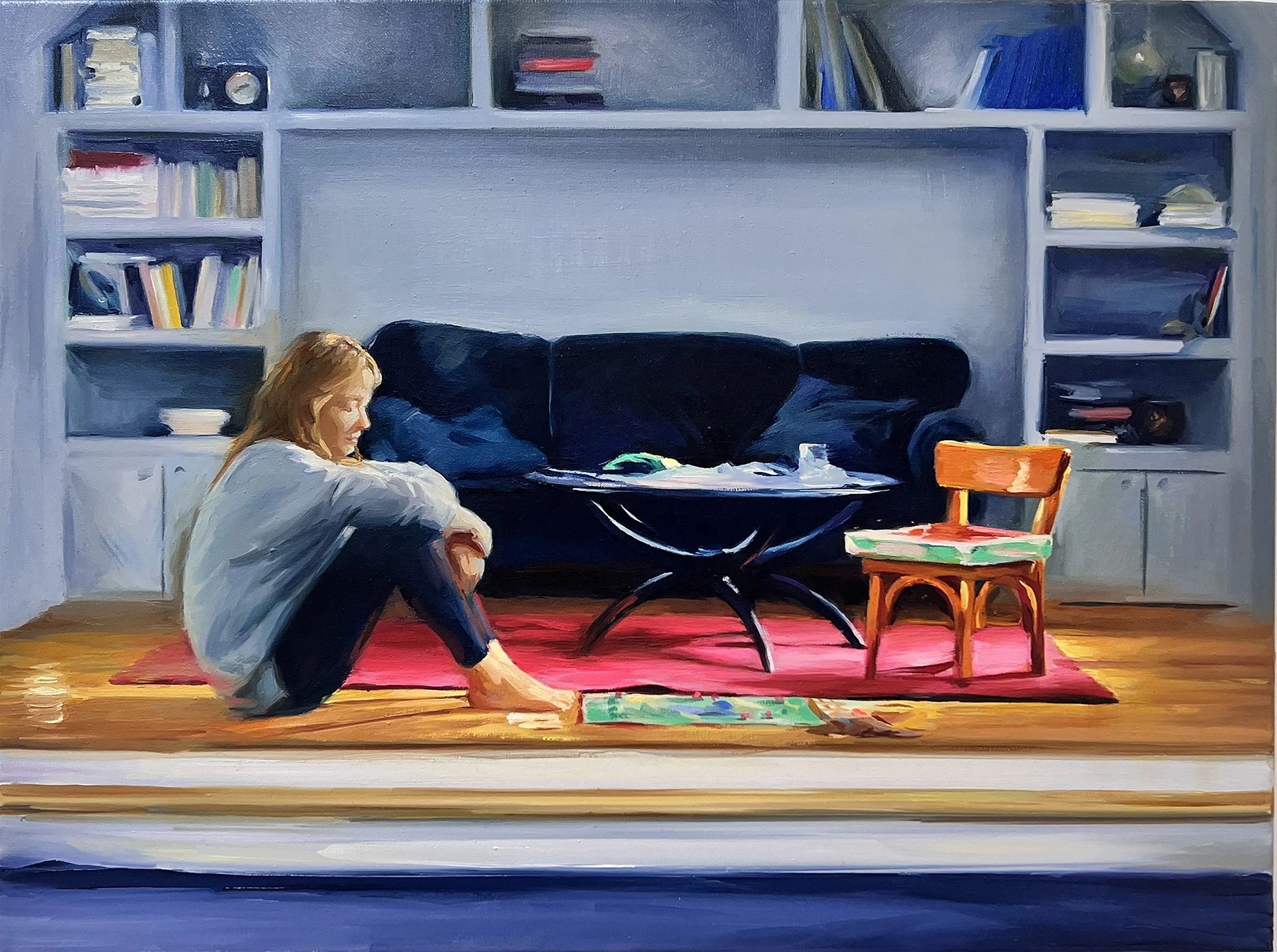
Photograph by Lisbet Corcoba
I've known Leticia for so many years that I can’t quite find the thread of the memory. What I do remember—clearly—is that while she was studying design, I suddenly realized she would never be a designer. Because she was an artist, and because she couldn't, wouldn't, and had no interest in being or doing anything else. I can’t recall the first time I saw her work either. But what I do know is that her work has been orbiting my gaze for a very long time, as if it had always been there—lurking, silent, waiting for unsuspecting, gentle eyes. Perhaps what holds my attention still is that if we separate the essential from the incidental, Leticia reveals such an intense coherence between her ethical life and her pictorial aesthetic that any attempt to pull the work away from the woman becomes futile.
Just days ago, she was named a grantee of the Pollock-Krasner Foundation—an institution that has supported visual artists worldwide for forty years. This recognition not only validates her work in the eyes of her community, it consecrates an ethic, a way of being in the world, and a relentless will to work that is rarely rewarded—and even less so in exile.
There’s something in the way Leticia looks that reminds me of the silhouettes in a half-empty movie theater, in a small town. Her childhood in Cabaiguán, marked by repeated afternoons in front of the same film, wasn’t merely anecdotal—it was an aesthetic initiation. What for others might have been tedious or a way to escape the monotony of the town, for her was sensory training. She learned to see beyond the plot, to register silences, to distill light. Her painting would be born from that cinematic gaze that dissolves narrative into atmosphere.
Behind that small frame, behind all that delicacy, stands an artist with a will of iron. And she paints without ceasing—because she can’t, won’t, and has no interest in doing anything else. Because an improbable, almost unhinged kind of faith pushes her toward the studio each day, where she stitches a piece of light to every shadow, where she catches every breeze, every fold of the passing day. Her work holds no intention of pleasing anyone or of explaining itself. There is only a vital, almost biological need. For her, painting is the only way not to disappear—the only way to understand her place in the world.
In her small studio, just like the one she had in Little Havana, she works layer upon layer with astonishing constancy. Not grandiloquently—but quietly. Because she has learned to persevere without spectacle and without show, in a world that loves to reward noise.
Her painting carries the sobriety of intimacy. Women—almost always—inhabiting interiors, suspended in the ambiguous time of a scene, within rooms where light not only reveals but also conceals. Her canvases don’t tell stories; they contain them. They are atmospheres suspended between what was and what has yet to be revealed. And even when they aren’t fully understood, they can be sensed. What truly matters in life can often do without words.
.jpg)
Hands Made, 2023. Oil on canvas. 52 x 96 in
In that sense, it’s no surprise that one of the pieces that holds the most meaning for her is Hand Made, a scene of women working in silence under a cold light. There is no explicit discourse, no protest, no pamphlet. But there pulses the quiet dignity of the inconsequential. A reverence for the everyday. A faith in what is essential.
Funnily enough—true to her own work—she herself can’t quite explain what she paints. Which is the most natural thing in the world, because words rarely accompany the form that runs freely, that neither means nor resembles. That is why I believe both silences—the one in her work and the one in her voice—share the same structure that holds her paintings together: spatial awareness, rhythm, breath. Leticia has never felt pressured by silence. She doesn’t try to fill it with sounds or birdsong—she inhabits it boldly. And in these times, that is audacity.
I try to recall a development as swift as the one she’s experienced in just a few short years. From her first exhibition—marked by unforgettable shyness—at the Annex Gallery in Cincinnati, to this most recent recognition, which she receives standing tall, defying the forces that once threatened to hold her back. Call them what you will: envy, bad luck, money, reality… whatever. She walked through each one under the watchful eyes of those who stood amazed.
So no, the Pollock-Krasner Foundation grant didn’t arrive by chance. It comes as a consequence of a body of work already mature, honest, profoundly sensitive, and rigorously executed. It is also an act of justice. Because in a system that often marginalizes those who work on the margins—by geography, by gender, by structural limitations, by language—this recognition erupts like a fierce affirmation.
Today, Leticia makes no attempt to explain her work—she neither wants to nor needs to. And yet, when speaking with her about anything else, everything falls into place. In the account of her daily life, there is an emotional clarity that disarms. She dismisses the elegant theories and the well-worn rhetorics. She speaks from the body, from experience, from a memory built without archives, without photographs, with films seen countless times and rooms haunted by presences.
I celebrate this grant not just as news, but as the triumph of faith and conviction. Because she represents a generation of artists who have learned—and insisted—on sustaining beauty. Who cultivate silence as a form of resistance. Who paint without asking permission. Who create from the shadows—not to hide, but to better see the light.

Photograph by Lisbet Corcoba
In a world that grows ever more fast-paced, conceptual, sarcastic—at times mocking, cynical—her work is a reminder of what truly matters: to pause. To look, to feel, to paint. To become again, once more, to paint again. And then, again—to look.












Comments powered by Talkyard.